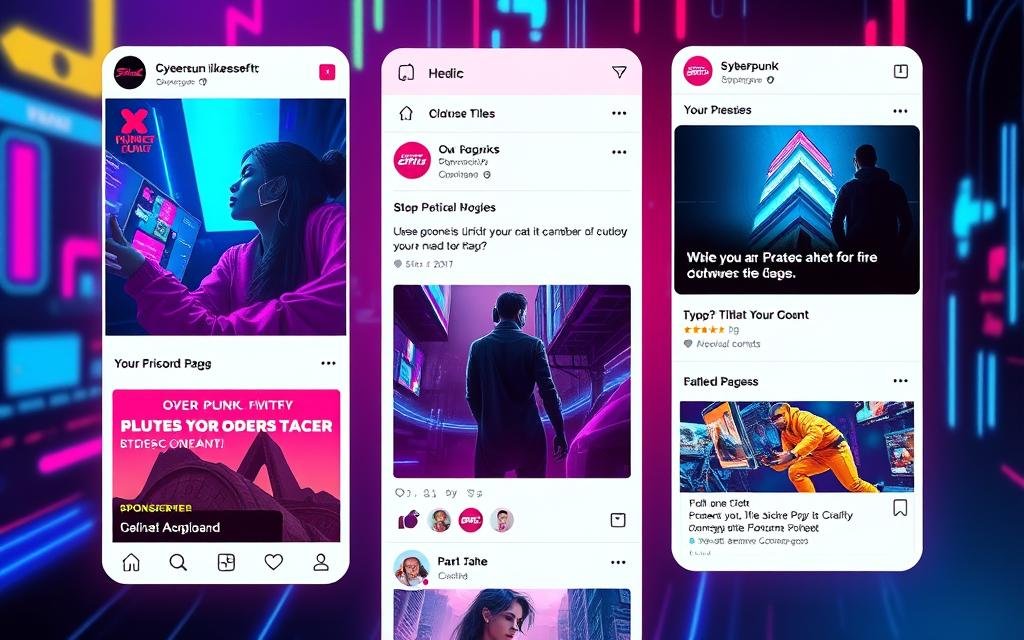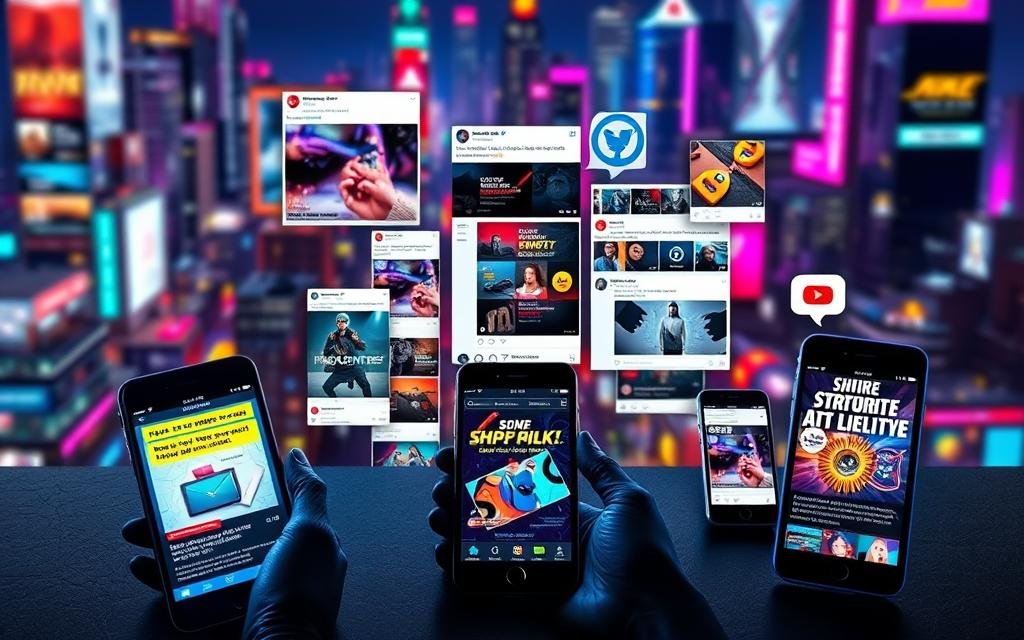In today’s competitive online landscape, digital advertising has emerged as a powerful tool for businesses to expand their reach and drive revenue.
Unlike traditional methods, digital ads offer an immediate impact, generating traffic and conversions quickly through strategic implementation across various platforms.
The digital advertising ecosystem encompasses multiple channels, including search, display, social media, and video, each with unique strengths that can be leveraged for specific marketing goals.
This comprehensive guide will explore how businesses can effectively utilize digital ads to drive immediate results while building sustainable marketing strategies for long-term growth.
Key Takeaways
- Understand the core types of digital advertising and their specific benefits.
- Learn actionable strategies for creating high-converting campaigns.
- Discover how to leverage different channels for specific marketing goals.
- Explore the importance of measuring ROI in digital advertising.
- Gain insights into building sustainable marketing strategies through digital ads.
Understanding Digital Advertising in Today’s Market
In today’s fast-paced digital landscape, understanding the nuances of digital advertising is crucial for businesses looking to drive immediate traffic and conversions. The digital advertising market has evolved significantly, offering a range of tools and techniques that differentiate it from traditional forms of advertising.

What Makes Digital Ads Different from Traditional Advertising
One of the key differentiators of digital advertising is its flexibility and speed of deployment. Unlike traditional advertising, where ads need to be printed or broadcast, digital ads can go live within minutes. This rapid deployment capability allows businesses to quickly respond to market trends and consumer behavior.
Furthermore, digital advertising offers real-time adjustments to creative content, targeting parameters, and budget allocation, which is not possible with traditional media once published. This flexibility extends to the ability to automatically generate ads based on standard templates, further streamlining the process.
The Immediate Impact of Digital Advertising
The immediate impact of digital advertising is evident in its ability to generate instant traffic, engagement, and conversions. Through precisely targeted campaigns, businesses can reach users at optimal moments in their customer journey, driving results quickly.
Digital advertising also provides measurable results through comprehensive analytics, enabling businesses to track performance metrics in real-time and make data-driven decisions about their marketing investments. This level of transparency and accountability is a significant advantage over traditional forms of advertising.
The Four Core Types of Digital Ads
To maximize online visibility, businesses can leverage four primary types of digital ads. These include search advertising, display advertising, social media advertising, and video advertising, each serving distinct purposes within a comprehensive marketing strategy.
Search Advertising: Capturing High-Intent Audiences
Search advertising captures high-intent audiences by displaying text-based ads on search engine results pages when users actively search for specific keywords related to products or services. This makes it exceptionally effective for driving immediate conversions from users with clear purchase intent.

Display Advertising: Building Brand Awareness
Display advertising focuses on building brand awareness through visually appealing banner ads placed strategically across websites and apps within advertising networks. This allows businesses to reach potential customers while they browse other content online.

Social Media Advertising: Engaging Your Target Audience
Social media advertising leverages the massive user bases and sophisticated targeting capabilities of platforms like Facebook, Instagram, LinkedIn, and Twitter to engage specific audience segments with highly relevant ad content that appears natively in their social feeds.

Video Advertising: Creating Emotional Connections
Video advertising creates emotional connections with viewers through compelling visual storytelling on platforms like YouTube, allowing brands to demonstrate products, explain complex services, and build deeper relationships with potential customers through engaging content.

Understanding when and how to deploy each type of digital ad is crucial for maximizing marketing effectiveness and achieving specific business objectives across different stages of the customer journey.
Key Benefits of Digital Ads for Immediate Results
Digital ads have revolutionized the way businesses approach marketing, offering a range of benefits that drive immediate results. The flexibility and effectiveness of digital advertising make it an attractive option for businesses of all sizes.

Cost-Effectiveness and Flexible Budgeting
One of the primary advantages of digital ads is their cost-effectiveness. With various pricing models such as pay-per-click (PPC), pay-per-impression (CPM), and pay-per-view (PPV), businesses can choose the model that best suits their budget and campaign goals. This flexibility in budgeting allows businesses to scale their campaigns up or down based on performance metrics and available resources, making digital advertising accessible to businesses of all sizes.
Precise Audience Targeting Capabilities
Digital ads offer precise audience targeting capabilities, enabling marketers to reach specific demographic segments, interest groups, or behavioral profiles. This targeted approach ensures that messages are delivered to the most relevant audience, increasing the likelihood of conversions and improving overall campaign performance. By targeting the right audience, businesses can maximize their return on investment (ROI) and achieve their marketing goals more efficiently.
Real-Time Campaign Adjustments
The ability to make real-time campaign adjustments is another significant benefit of digital ads. With comprehensive analytics platforms, marketers can monitor campaign performance in real-time, making adjustments to creative elements, targeting parameters, and budget allocation as needed. This level of control and flexibility allows businesses to optimize their campaigns for better results, capitalizing on opportunities and addressing challenges as they arise.
Creating High-Converting Search Ad Campaigns
Creating high-converting search ad campaigns requires a strategic approach to maximize ROI. To achieve this, marketers need to focus on several key elements that work together to drive conversions.

Effective Keyword Research Strategies
Effective keyword research forms the foundation of successful search ad campaigns. Marketers must identify high-intent keywords with appropriate search volume and competition levels that align with their business offerings and campaign goals. This involves analyzing search trends, competitor activity, and user behavior to select the most relevant and high-performing keywords.
Writing Compelling Ad Copy That Drives Clicks
Writing compelling ad copy requires balancing persuasive messaging with clear value propositions. Marketers must incorporate relevant keywords naturally while addressing the specific needs and pain points of the target audience to maximize click-through rates. This involves crafting a clear and concise message that resonates with the target audience.
Optimizing Landing Pages for Conversions
Optimizing landing pages for conversions involves creating focused, relevant content that delivers on the promise made in the ad. This includes clear calls-to-action, minimal distractions, and mobile-responsive design to facilitate the user journey from click to conversion. By optimizing landing pages, businesses can improve their overall conversions and achieve a higher return on ad spend.
By implementing these strategies, businesses can create high-converting search ad campaigns that drive immediate traffic and conversions. Continuous testing and refinement of these campaigns through A/B testing of ad copy variations, landing page elements, and bidding strategies is essential for identifying the most effective combinations that drive consistent conversion improvements over time.
Maximizing Impact with Display and Retargeting Ads
To truly maximize the potential of digital advertising, understanding the nuances of display and retargeting ads is crucial. The main goal with display advertising is gaining impressions and brand awareness. However, to have a true impact on other campaigns, careful curation of audiences is necessary.

Audience Curation Techniques
Strategic audience curation for display ads involves analyzing customer data, website analytics, and market research to identify valuable audience segments. Advanced targeting parameters such as demographic filters and interest categories enable reaching specific audiences across various websites.
Retargeting for Conversions
Retargeting previous site visitors is an effective display advertising strategy, typically delivering click-through rates up to 10 times higher than standard ads. This focuses on users already familiar with the brand, increasing the likelihood of conversions.
Creative Best Practices
Creating effective display ads requires clear brand identification, compelling value propositions, and strong calls-to-action. Visually appealing designs that stand out without being disruptive are also crucial. Regular placement audits help refine targeting parameters and exclude underperforming placements, maximizing campaign efficiency.
Leveraging Social Media Ads for Rapid Engagement
Effective social media advertising is key to achieving rapid engagement with your target audience. When you’re paying to play, it’s tempting to only promote bottom-funnel offers that will bring in direct profit. However, this approach can backfire because not everyone in your audience is ready to purchase right away.
The key is to focus on what’s highest value to your prospects at each stage in their buying journey. Building effective full-funnel social media campaigns requires developing content and offers appropriate for each stage of the customer journey.
Building Effective Full-Funnel Social Campaigns
To build effective full-funnel social media campaigns, you need to develop content that caters to different stages of the customer journey. This includes awareness-building content for cold audiences and conversion-focused messaging for users who have already engaged with your brand.
Platform-Specific Strategies
Different social media platforms offer unique audience demographics, content formats, and advertising capabilities. For instance, Facebook and Instagram ads excel at visual storytelling and community building for B2C brands, while LinkedIn offers superior targeting for B2B companies seeking to reach decision-makers within specific industries or organizations.
Creative Approaches to Overcome Targeting Limitations
With increasing privacy regulations, advertisers must develop innovative strategies using first-party data, lookalike audiences, and on-platform engagement. Social media advertising also provides opportunities for rapid engagement through interactive ad formats like polls, quizzes, and instant messaging connections.

By organizing campaign structures by objective rather than audience segments, businesses can achieve more efficient budget allocation, clearer performance analysis, and more effective optimization of social media advertising efforts.
Video Ad Strategies That Drive Immediate Action
Video advertising has become a crucial element in digital marketing, enabling businesses to captivate their audience and drive conversions. Effective video ad strategies require a deep understanding of the platforms on which they are deployed.
Creating Compelling Video Content for Different Platforms
To create compelling video content, it’s essential to understand the specific viewing contexts and audience expectations of different platforms. For instance, YouTube viewers are typically more receptive to longer, educational content, while social media platforms demand shorter, attention-grabbing videos.
YouTube Advertising Best Practices
YouTube advertising best practices include optimizing for both search and suggestion algorithms by using relevant keywords in titles, descriptions, and tags. Creating custom thumbnails that drive higher click-through rates is also crucial.
Measuring Video Ad Performance
Measuring video ad performance extends beyond view counts to include metrics like view duration, engagement rate, click-through rate, and conversion attribution. This provides a complete picture of campaign effectiveness across the customer journey.
By understanding these elements and incorporating them into a comprehensive video ad strategy, businesses can drive immediate action and achieve their marketing goals.
Measuring Success: Analytics and Optimization
Effective measurement and optimization of digital ad campaigns are critical for achieving marketing goals. To ensure the success of digital advertising efforts, businesses must implement robust analytics and optimization strategies.
Key Performance Indicators for Digital Ad Campaigns
Establishing clear key performance indicators (KPIs) aligned with business objectives is essential for measuring digital ad campaign success. Metrics vary based on campaign goals, from impression share and click-through rates for awareness campaigns to conversion rates and return on ad spend for performance-focused initiatives.
A/B Testing Strategies for Continuous Improvement
A/B testing enables continuous improvement of digital ad campaigns through systematic experimentation with variables such as ad creative, audience targeting parameters, and bidding strategies. This helps identify the most effective combinations that drive better results.
Attribution Models for Understanding Customer Journeys
Attribution models help marketers understand the complex customer journey across multiple touchpoints and channels. Options range from last-click attribution to data-driven models that distribute conversion credit across all influential touchpoints, providing a comprehensive view of campaign performance.
By leveraging these analytics and optimization techniques, businesses can refine their digital ad campaigns, improve performance, and maximize ROI.
Conclusion: Building a Sustainable Digital Ads Strategy
As the digital advertising landscape continues to shift, businesses must be prepared to adjust their strategies to meet the changing needs of their target audience. A sustainable digital ads strategy requires balancing immediate performance goals with long-term brand building, creating an integrated approach that leverages the strengths of each advertising channel while maintaining consistent messaging across platforms.
Effective digital advertising strategies adapt to changing market conditions, emerging technologies, and evolving consumer behaviors. By incorporating continuous learning and optimization processes, businesses can leverage digital ads to drive immediate traffic and conversions while building sustainable marketing systems that deliver consistent results over time.
By implementing these strategies, businesses of all sizes can create a comprehensive marketing ecosystem that includes digital ads, organic search, content marketing, and other channels working together to guide customers through their buying journey.
